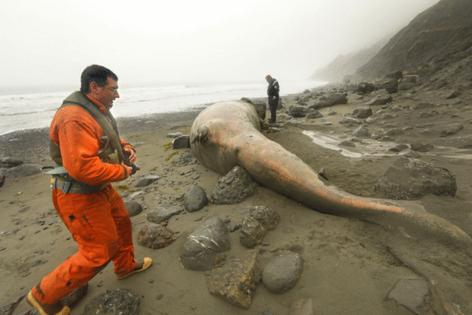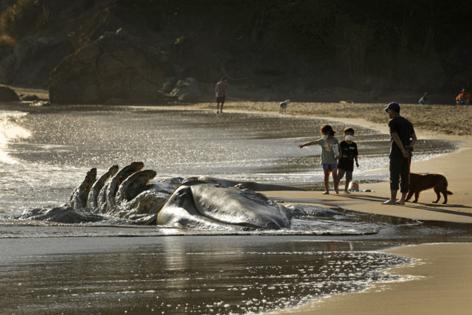Starvation has decimated gray whales off the Pacific Coast. Can the giants ever recover?
Published in Science & Technology News
LOS ANGELES — When large numbers of gray whales began washing up along North America’s Pacific Coast nearly six years ago, marine scientists could only speculate at the reason: Was it disease? Ocean pollution? Increasing ship collisions?
Many of the doomed cetaceans looked skinny or emaciated, while others looked torn up by orcas. Some had clearly died after being struck by a ship, or getting entangled in fishing gear. Still others provided no discernible clues.
Now — after more than 700 gray whales have washed ashore in Mexico, Canada, California and other U.S. states since late 2018 — new research published Tuesday in PLOS One suggests the culprit was a critical drop in food availability in the mammals’ Arctic and sub-Arctic seafloor feeding grounds.
What remains unclear however is whether this malnutrition was caused by a change in the ocean, or the whales themselves.
“Did something happen to their food supply in those years that put them under acute nutritional stress and which resulted in a lot of whales being in really poor condition and dying?” said study co-author Padraig Duignan, a pathologist at the Marine Mammal Center in Sausalito.
“Or did the number of whales in the population build up to such a level that they have competed with each other for food and then again, a proportion of the population died off because they couldn’t compete for the available resources?” he said.
The research builds on an investigation that the National Oceanic and Atmospheric Administration launched in early 2019, after declaring the whale deaths an unusual mortality event, or UME. Researchers, observers and stranding coordinators across North America began working together — alerting one another to strandings; sending crews to document and collect tissue samples; and performing necropsies (the animal form of an autopsy).
The NOAA investigation recorded 690 dead whales since Jan. 1, 2019. However, researchers suspect the true number is thousands more than that. Most whales die at sea and sink to the seafloor, far beyond the sight or reach of humans.
Joshua Stewart, a quantitative ecologist at Oregon State University’s Marine Mammal Institute, who was not an author on the paper, estimates the gray whale population was reduced by half during the most recent mortality event.
“The population is 14,000 down from 27,000 or so,” he said. “That’s a big drop.”
...continued
©2024 Los Angeles Times. Visit at latimes.com. Distributed by Tribune Content Agency, LLC.










Comments